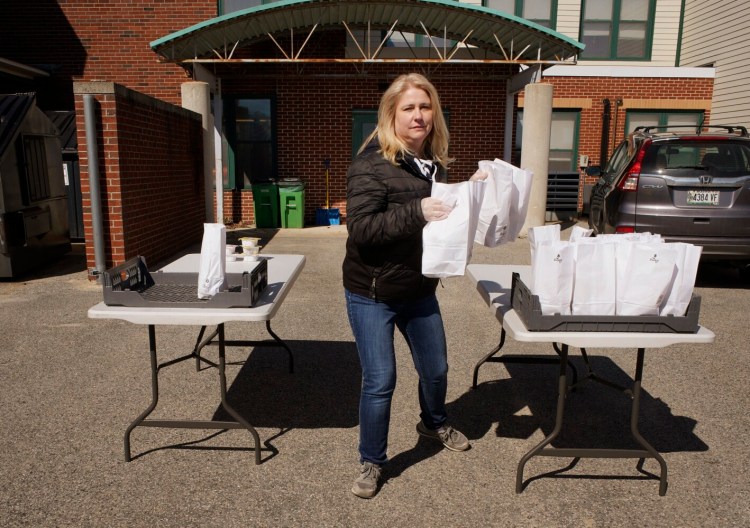More than 390 million children in 29 countries have been affected by school closures aimed at slowing transmission of COVID-19, and the number is growing by the day. This is an education crisis with no parallel in recent history.
Public health officials may have good reasons for keeping kids out of school as they try to contain the spread of the virus. But we all need to understand that school closures have consequences.
Between 2014 and 2016, large numbers of schools were closed in West Africa in response to the Ebola virus. Over the course of the outbreak, schools were shuttered for five months in Guinea, seven months in Liberia and nine months in Sierra Leone. An estimated 5 million children were affected. The closures not only interrupted educational progress; they also curtailed normal social interaction and limited access to essential services families relied on, including school nutrition and health programs, information on disease prevention, and access to clean water and sanitation.
Some children never returned to the classroom after schools reopened. Others had fallen far behind in learning and development. The school closures in West Africa also contributed to increased rates of sexual abuse and exploitation of children, as well as teenage pregnancies. The combination of being out of school and the loss of family livelihoods caused by the outbreak left some girls especially vulnerable to sexual violence. During the Ebola outbreak in Sierra Leone, for example, cases of teenage pregnancy more than doubled to 14,000.
It’s easy for people in the United States to dismiss West Africa’s issues as unique to developing nations, but they are not. In Los Angeles, for example, nearly 80% of the students attending the district’s public schools qualify for free or reduced-price school meals. Hundreds of thousands of Los Angeles Unified School District students and their families rely on those meals as a key part of their daily nutrition. And numerous families rely on schools for specialized services for children with disabilities and essential child care that enables parents to work.
School closures are costly and have economic and social impacts that affect women disproportionately and hurt the poorest families the most. So far, many of the school closures in the United States haven’t addressed key issues. If children aren’t in school, but continue to take public transportation, visit public places and gather together in ad hoc child care arrangements, what is gained by closing schools?
The West Africa experience showed clearly that there is a real cost to interrupting children’s education, particularly for those from vulnerable communities. But it also showed schools could continue to operate safely. Together with its partners, UNICEF developed and implemented anti-Ebola protocols and prevention measures in numerous schools in affected regions. Classes continued, children and families benefited, and no cases of Ebola transmission in the schools were reported.
Steps in schools included thorough cleaning of classrooms and facilities, stepping up provision of safe water, and increasing good hygiene practices such as hand washing and keeping toilets clean. It also included Ebola-specific measures such as daily temperature screening and training for teachers on how to support one another and students’ psychological well-being in the midst of the crisis.
The protocols put in place were simple, but when implemented with care and consistency, they not only prevented transmission of a deadly disease; they also gave children, parents and teachers an important sense of control in frightening times. Today, the number of children affected by school closures related to COVID-19 is 60 times greater than what we saw in West Africa. The world should look to the lessons learned there.
We don’t want to second-guess public health officials, and it is their job to decide whether to close schools based on the best and latest information. But we hope they will consider all options. We also hope they will take action to mitigate the possible negative effects on children’s learning and well-being. This means having solid plans in place to ensure the continuity of learning, including remote learning options, and access to essential services — such as health care, food programs and child care — for affected children.
The planning should also include steps for the eventual safe reopening of schools. Social services should also be working to keep children safe from abuse, promote healthful behaviors and provide families with strategies to cope with psychological and financial pressures stemming from the COVID-19 outbreak. Where schools remain open, safe operational guidelines — including guidance we issued recently in conjunction with the World Health Organization and the International Federation of Red Cross and Red Crescent Societies — should be followed to ensure that children and their families remain protected and informed. Schools can be used as important mechanisms to provide children with vital information about how to protect themselves and their families.
COVID-19 poses a very real threat to children’s well-being and education globally. It is a threat that demands a smart and integrated response to keep children safe and learning.
Robert Jenkins is UNICEF’s chief of education.
©2020 Los Angeles Times
Visit the Los Angeles Times at www.latimes.com
Distributed by Tribune Content Agency, LLC.
Send questions/comments to the editors.



Success. Please wait for the page to reload. If the page does not reload within 5 seconds, please refresh the page.
Enter your email and password to access comments.
Hi, to comment on stories you must . This profile is in addition to your subscription and website login.
Already have a commenting profile? .
Invalid username/password.
Please check your email to confirm and complete your registration.
Only subscribers are eligible to post comments. Please subscribe or login first for digital access. Here’s why.
Use the form below to reset your password. When you've submitted your account email, we will send an email with a reset code.